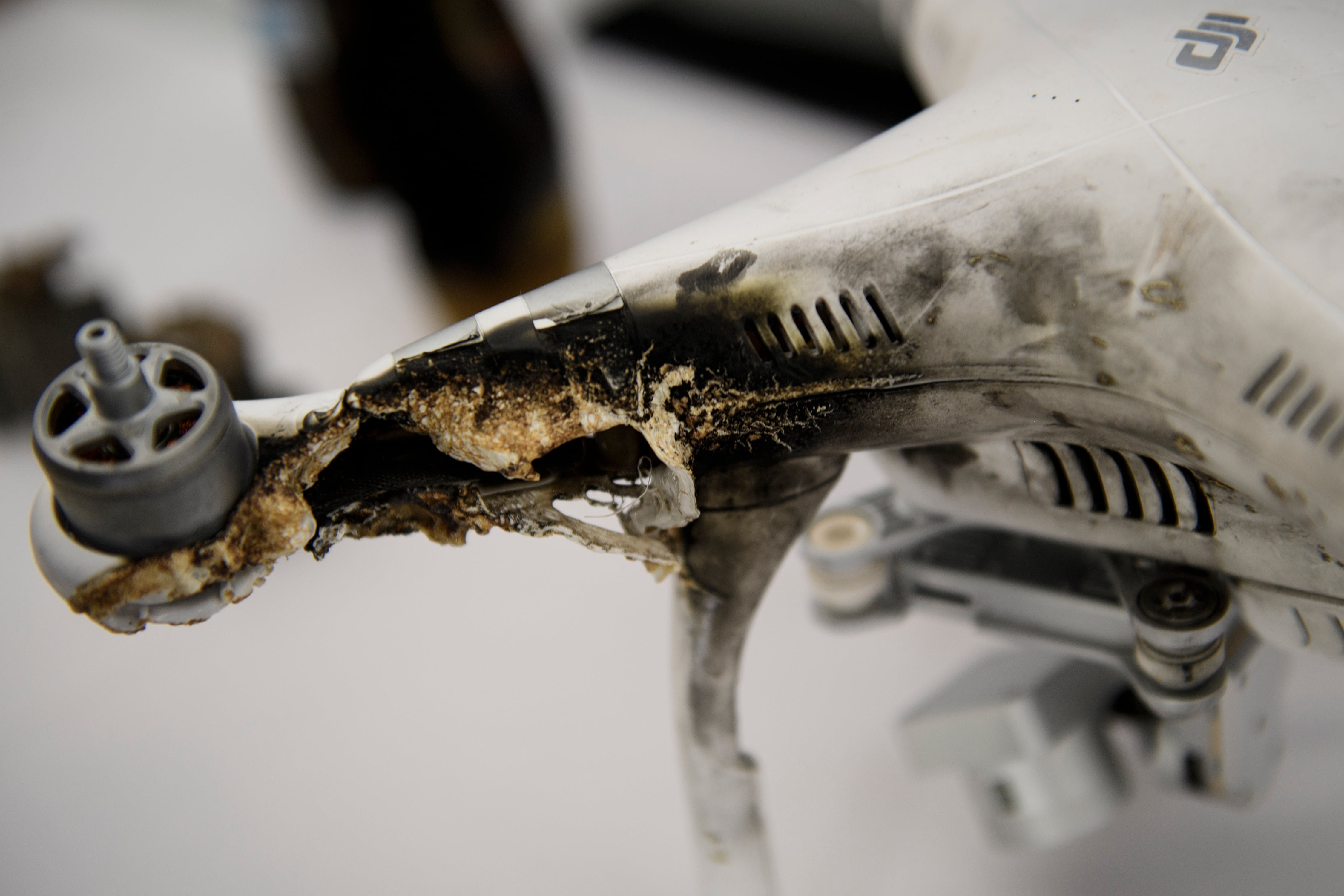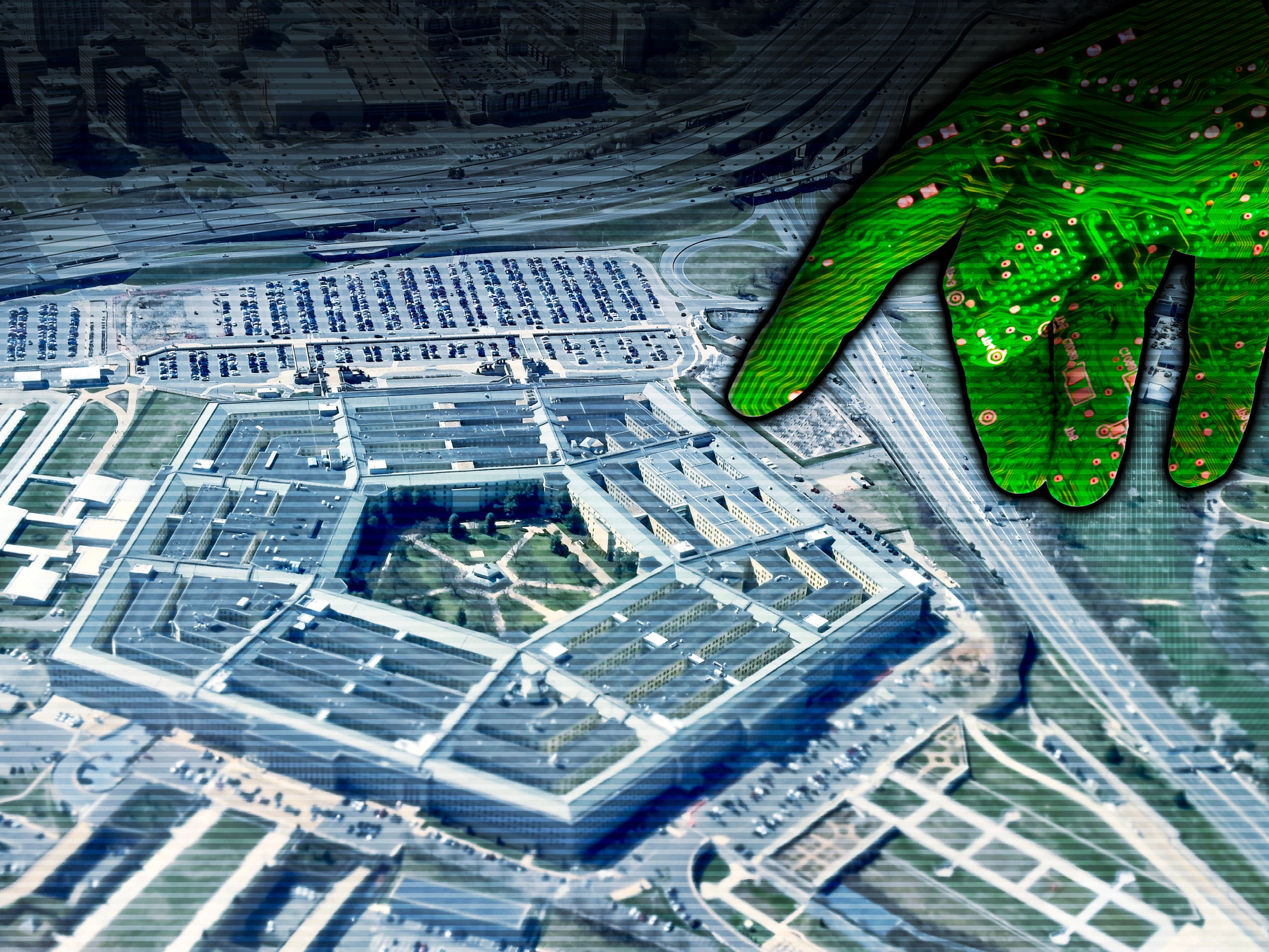WASHINGTON — After years of catching grief for exquisite weapons acquisition programs with creeping requirements leading to lengthy delays and budget overruns, the Pentagon now finds itself with a different sort of headache: how to stop weapons and systems that are dirt cheap.
The growing problem of inexpensive unmanned systems employing autonomy and artificial intelligence has been a longtime subject of military study and discussion.
But the ongoing conflict in Ukraine has underscored just how effective smart tech accessible to anyone may be in neutralizing the elaborate tools of conventional warfare. In one example from the war, Ukraine reportedly used a Chinese-made DJI drone worth $2,000 to destroy a Russian T-90 tank worth millions of dollars.
Drawing on a newfound urgency, the U.S. undersecretary of defense for research and engineering published a need statement in May, calling on industry to help develop new weapons that can effectively meet the new threat from unmanned, autonomous and AI defense-driven systems.
“Multi- and cross-domain Uncrewed Systems (UxS) continue to be a threat to U.S. forces around the world. This threat is expanding in all domestic and international regions,” the need statement begins, citing the directive in the 2022 National Defense Strategy to stay ahead of the problem. “This threat is no longer just in the aerial domain, but also from ground, subterranean, sea, and undersea domains. Near-peer adversary nations are rapidly incorporating robust UxS capabilities into their military formations, and non-state actors are using UxS to increase their asymmetric advantage.”
While aerial drones have had the most opportunities to make a mark on the battlefield, both in Ukraine and the 2020 Nagorno-Karabakh conflict in the South Caucasus, undersea systems may not be far behind.
Ukrainian unmanned underwater vessels, such as the Toloka TLK-150, likely already have been responsible for limiting Russian aggression at sea.
And in the subterranean realm, expected to become an increasingly critical domain as more conflicts play out in and around big cities, the Defense Advanced Research Projects Agency is working to develop unmanned systems that can navigate the tight and dark spaces.
The newly published need statement calls for weapons that can destroy or stymie uncrewed threats in the following ways:
- Disable the detecting abilities of drone swarms.
- Create barriers or obstacles that thwart navigation.
- Use kinetic, directed-energy and control-link defenses to answer or avert physical and electronic attacks by uncrewed systems “without exhausting defensive capabilities.”
- Provide assessment capabilities to measure the effectiveness of these defensive approaches.
Notably, the Defense Department has provided a Ukraine aid package, announced in April, that included 30 mm gun trucks and laser-guided rocket systems designed to destroy drones. But the new need statement underscores how daunting it is to defeat a cheap, smart threat that keeps coming, no matter how many individual platforms are shot down.
“I would say that you should look at this need statement as basically saying: ‘OK, we recognize that these sorts of cheap and extremely numerous drones are likely to be an enduring part of future battlefields,’ ” said Gregory Allen, director of the Wadhwani Center for AI and Advanced Technologies at the Center for Strategic and International Studies think tank.
While the individual services have experimented with counter-drone swarm weapons ― the Air Force Research Laboratory recently tested out a microwave system called the Tactical High-power Operational Responder, or THOR ― Allen said programs of record for effective counter-unmanned and counter-AI weapons have yet to materialize.
“Where is the mass procurement of this capability that reflects that it has an enduring place in the arsenal?” he wondered.

Allen added that effective jamming of remotely piloted drones is accelerating the move to systems that are truly autonomous — another development that challenges the status quo for the U.S. Meanwhile, Ukraine is reportedly losing 10,000 drones a month to Russian jammers
In a paper published in May, Allen highlighted the Defense Department’s slow progress in developing AI and autonomy capabilities, calling on program managers to interrogate their efforts and ensure their objectives are specific and achievable.
According to the published need statement, the three categories of technology most interesting to the Pentagon include:
- Novel sensors that track and identify drones faster and across domains, possibly through the application of AI and machine learning.
- Autonomous defensive technologies that attack enemy drones’ navigation systems and onboard artificial intelligence capabilities.
- Passive defeat capabilities that may target and exploit vulnerabilities in unmanned systems’ artificial intelligence algorithms, or that could cloak sites that drones might target.
James Ryseff, a senior technical policy analyst at the think tank Rand, said the Pentagon could learn from private sector development and adopt an approach focused more on innovation and creative solutions than on building to meet a specific requirement.
“Software is more like a research project than it is like a construction or just a manufacturing project,” he said.
Ryseff acknowledged that such a change in approach would require major shifts, such as bringing more software development capabilities in-house or bypassing parts of the traditional acquisition process.
He pointed to then-Defense Secretary Robert Gates’ urgent personal intervention in the early 2000s to field mine-resistant, ambush-protected vehicles to troops encountering improvised explosive devices downrange as an example of how the Pentagon had been able to move quickly to acquire needed technology in the past.
However, Ryseff added, military leaders don’t appear concerned enough to consider such a radical response.
“There’s got to be some kind of a big ‘Oh, my gosh’ moment to get to that level of impact,” he said. “And right now, we don’t have it.”
Pentagon stakeholders plan to hold a meeting with industry representatives in July to discuss proposed counter-unmanned solutions and ways forward on development, according to the need statement.
Hope Hodge Seck is an award-winning investigative and enterprise reporter covering the U.S. military and national defense. The former managing editor of Military.com, her work has also appeared in the Washington Post, Politico Magazine, USA Today and Popular Mechanics.








